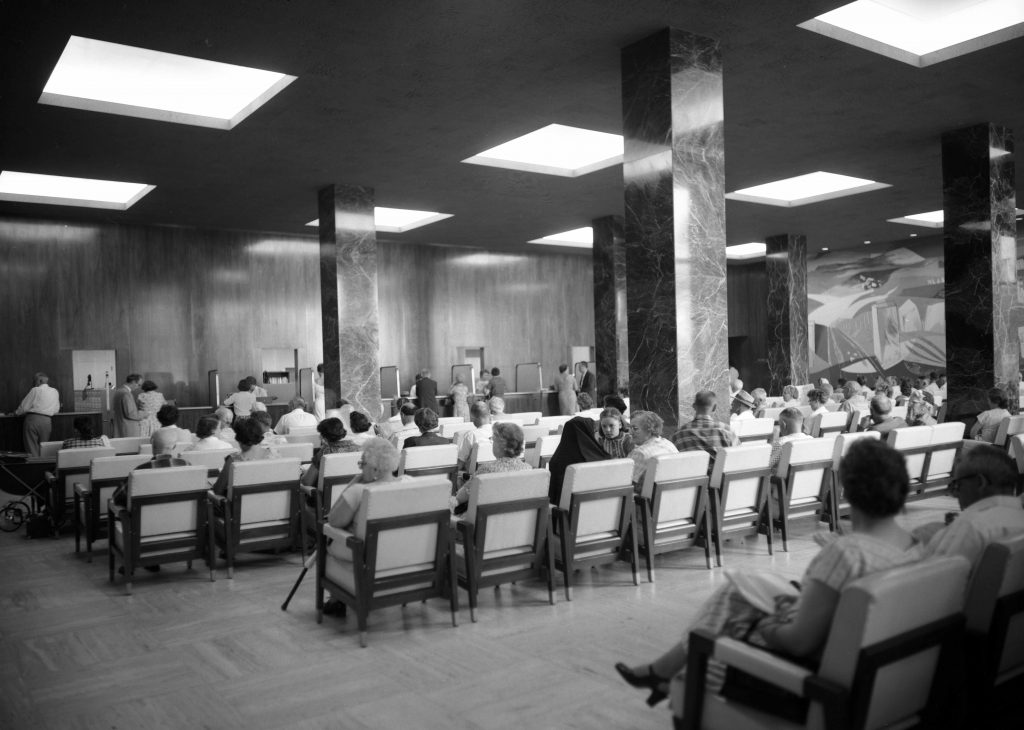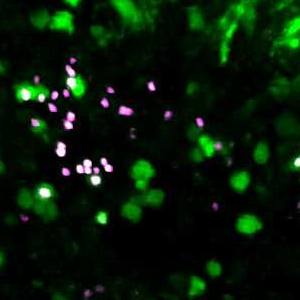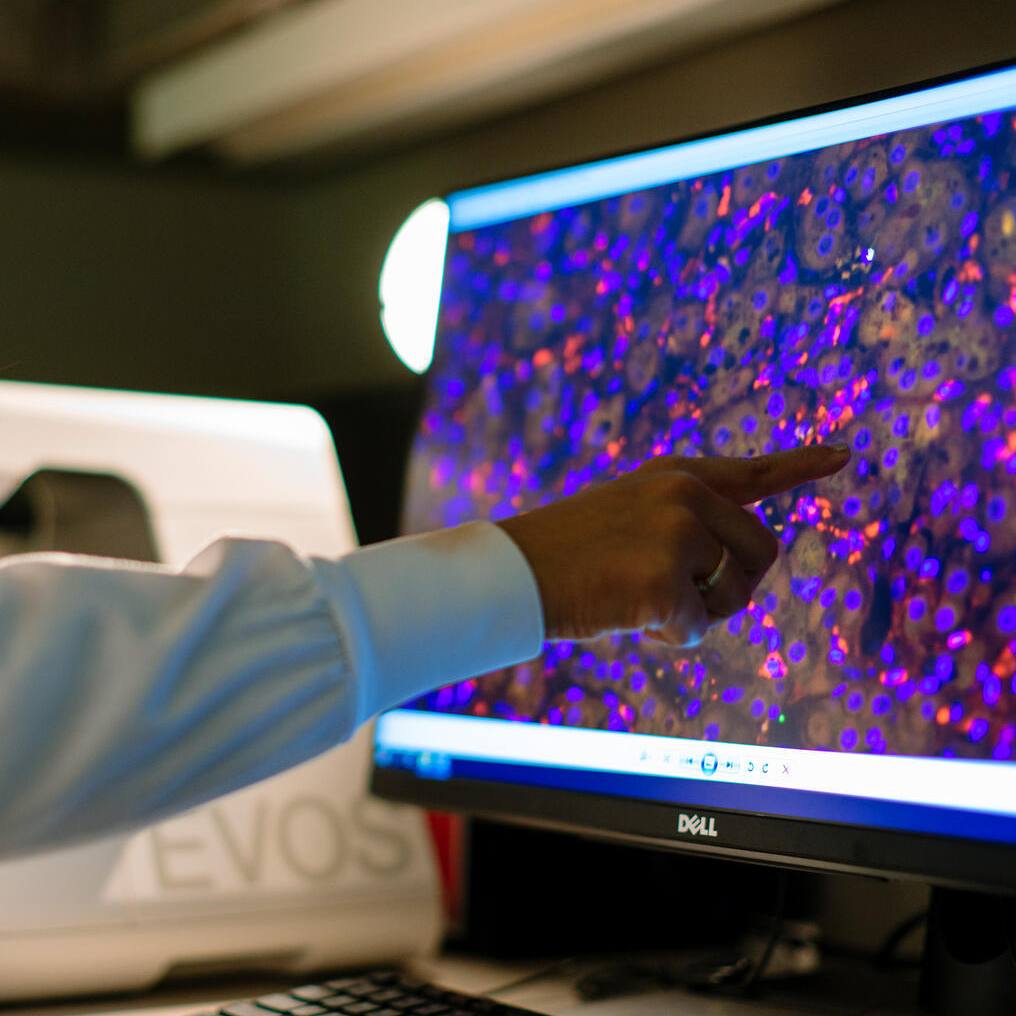-
#FlashbackFriday 1959: When the Diagnosis Is Cancer

This article first appeared July 11, 1959, in the publication Mayovox.
This is a non-technical report on one of the illnesses that bring tens of thousands of people to the Mayo Clinic annually. It is emphatically not intended to make those of us on the non-medical side of the team into amateur doctors, diagnosing ourselves and others. It is intended to make us somewhat more aware of the problems faced by Clinic physicians and their patients.
Actually, the report would be a success if it served only to remind us of one fact—that the “difficult” patient we helped this morning, when relieved of the pain in his body and the fear in his heart, is probably a pretty nice guy.
She was a talky, friendly little woman, this patient. Intent on laboratory reports, the consultant caught only fragments of her remarks . . . “never sick a day in my life . . . nonsense, going through the Clinic . . . my husband and the girls kept at me . . .”
The doctor took off his glasses and rubbed his forehead. It had been a tough day, and this had to be done right.
“Mrs. Collins,” he said. “I’m glad that your family did keep at you to see us. Very glad.”
Mrs. Collins back stiffened.
“Our studies indicate that you have a—growth.” The doctor chose his words with great care, watching her.
“Cancer,” Mrs. Collins said in a steady voice.
“A form of cancer, yes. But fortunately a form that—found in time, as in your case—has almost a 100 per cent rate of cure. Now here is what I am recommending that you do. . .”
Probably the most feared of all of man’s maladies is cancer. As simply as a profoundly complicated thing can be defined, cancer is an uncontrolled growth of abnormal cells. Unlike many diseases it seldom announces itself with pain or fever. It can strike in many forms, in almost any part of the body, in tissue, blood, and bone.
Our Mrs. Collins (the name, of course, was picked at random) in one sense is a fortunate woman. She had come for an examination early and her particular problem—cervical uterine cancer—can be handled surgically with great success.
Waited Too Long
There are other diagnoses that are less happy. Probably few Clinic clinicians have not at some time looked at a patient and thought in angry pity: “Why didn’t you come to us six months ago? Maybe then we could have helped you. Now. . .”
For cancer today can often be cured, or at least alleviated. But first the patient must come to the doctor. As the 1957 annual report of the American Cancer Society put it: “Prompt, adequate treatment, growing out of early detection, is the only sure technique that science has today for saving cancer lives.”
Hundreds of such patients are seen annually by Clinic consultants. They come here for a variety of reasons—because of suspicion of a malignancy, for a routine checkup, on referral of a family physician.
The chosen treatment is a complicated matter of medical judgment. Sometimes surgery is best, sometimes x-ray. Sometimes x-ray followed by drugs is preferable, or surgery, x-ray and drugs. Sometimes treatment with radioactive isotopes is indicated.
The precise course of treatment depends on many factors, including site and rate of progress of the malignancy, physical condition, even the attitude of the patient.
Facts and Figures
A few statistics fit here.
The chance of a given person getting some form of cancer at some time in his life is about one in four.
A short generation ago, about one person in seven survived the disease. Today, it is estimated that the odds are improved to one in three. With available knowledge this could be further improved to one in two—if more people (a) knew the danger signals, (b) consulted physicians more promptly.
The danger signals are seven. Unusual bleeding or discharge. A lump or thickening in the breast or elsewhere. A sore that does not heal. Change in bowel or bladder habits. Hoarseness or cough. Indigestion or difficulty swallowing. Change in a wart or mole.
Naturally, it would be unreasonable to see a malignancy in every pimple. But any of the danger signals should make a prudent person check with his doctor, just to be sure.
Incidentally there is an old wives’ tale that “cancer is a woman’s disease.” It is no such thing. Actually, more men than women die of it.
Typical Reactions
There are psychological aspects of the whole problem that the doctor must always consider. The American Cancer Society lists four typical reactions:
- “What I don’t know won’t hurt me.”
- “Don’t you dare mention that subject!”
- “Cancer can’t strike me; I’m hiding.”
- “I’m alert but not alarmed. I have health checkups and watch for the danger signals.”
The more that people can be taught to cultivate Reaction No. 4, the more lives will be saved.
What causes cancer?
Science doesn’t know for sure, but hundreds of researchers are exploring many different possibilities in seeking the answer. And while no one can say with certainty, “This thing—this causes cancer,” each year bits and pieces of the riddle fall into place.
A recent issue of the AMA’s “Washington Letter” reported on a “massive effort” by the Public Health Service to discover chemical compounds that will be both safe and effective for treatment.
This report carried a significant quote from Health-Education-Welfare Secretary Flemming:
“So far none of the drugs being tested has proved to be a cure for cancer. The only existing cures for cancer are through treatment by radiation or surgery. The Surgeon General advises me, however, that some promising new compounds developed in the chemotherapy program are being tested against a variety of cancers.”
Important advances have been made through study of chemical differences between cancerous and normal cells. There seems to be accumulating evidence that viruses may be contributory or even causative agents in the development of some cancers. Researchers are following up on cases of “spontaneous regression”—self-healing of malignancy. Still others have been trying to learn more about a substance called properdin, which is present in healthy persons but lacking in the cancer-prone.
These and other possibilities are being carefully examined. From one of them, or perhaps from something not yet even considered, a solution to the problem of cancer may some day be found.
As laboratory investigators dig for fundamentals, clinicians and surgeons work endlessly to improve present methods of treatment to save more and more cancer-threatened lives.
But it all begins—it can begin nowhere else—with the patient first coming to the doctor.







